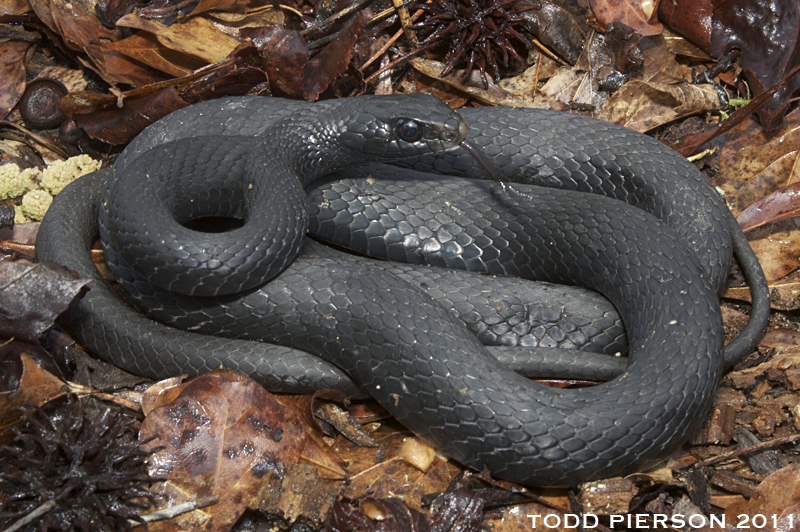

These snakes are generally not kept as pets for their aggressive nature. Hibernation generally takes place in rocky mountain areas. They are known to hibernate in groups during the cold winter months. Their lifespan ranges from 15 years to 20 years. The hatchlings do not receive any parental care, but they may remain near the female Blue Racers for a few hours after birth. Hatchlings use their “egg tooth” to cut their way out of the eggs. These white, oval eggs are 2.5 cm to 3.9 cm long with leathery shells. The Blue Racer Snake eggs hatch in August or early September. Picture 2 – Blue Racer Snake Photo Life Cycle They lay 6 to 25 eggs in communal dens during late June and leave the dens afterwards. The females build their nests in sand, tree cavities, leaf litters and unoccupied burrows of small mammals. These oviparous snakes generally reproduce twice every year. But they are able to reproduce only after reaching 2 years of age. The males become physiologically mature at 11 months. Reproductionįemale Blue Racer Snakes mature at 2 years of age, but they cannot reproduce until they become three years old. Their mating season starts around April and continues through May.

The Blue Racer Snakes are very intolerant of human activity.They are known to forage both on ground and trees.These snakes are very active as foragers.A large number of Blue Racers can live in single habitat as they are not territorial in nature.They prefer to spend most of their time on ground.They are diurnal in nature, being active during daytime.Behaviorįind out about the behavior patterns of the Blue Racers:

Different insects such as spiders, worms and crickets are the foods of the Blue Racer Snake hatchlings and juveniles. DietĪdult Blue Racers feed on various songbirds, rodents, smaller snakes and frogs. The range of their habitation extends to an area of 25 acres. It is believed that all these habitats are necessary for fulfilling their ecological requirements. They prefer to live in savannas, hedge rows, meadows, weedy lake edges and marshes.

These reptiles can be found in open as well as semi-open habitats. Their distribution range includes Pelee Island, Indiana, Ohio, Michigan, Illinois, Iowa and Wisconsin. This Racer snake is found throughout United States and the eastern regions of the Rocky Mountains. The range of their distribution extends from Canada in north to Guatemala, Mexico and Belize in south. Picture 1 – Blue Racer Snake Distribution Snouts: They have brownish orange snouts.
Coluber constrictor foxii mich skin#
The skin around their eyes is generally darker in color than the rest of the body. Their anal plates are divided.Įyes: Their eyes are larger compared to that of many other species of snakes. Scales: They have smooth scales without keels. Hatchlings of these Racers have dark blotches on their backs. The color of the scales covering their backsides varies from brilliant blue to dull grey. Hatchlings are 8 inches to 13 inches long.Ĭolor: The underbellies or ventral sides of their bodies are covered with creamy white scales. Length: Their snout-to-vent length ranges between 90 cm and 152 cm. This large snake has an attractive coloration.


 0 kommentar(er)
0 kommentar(er)
